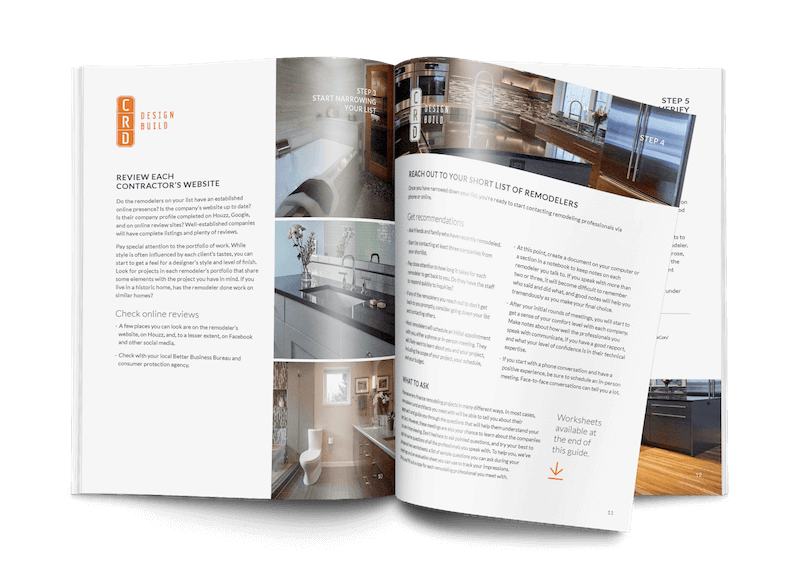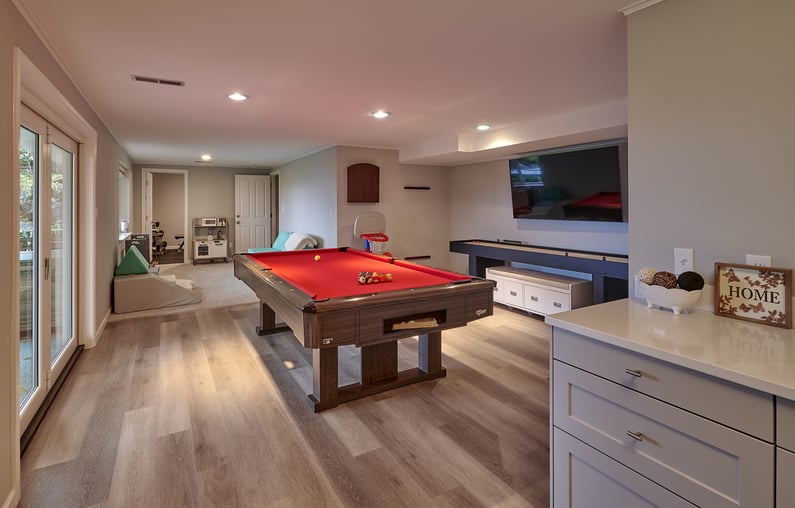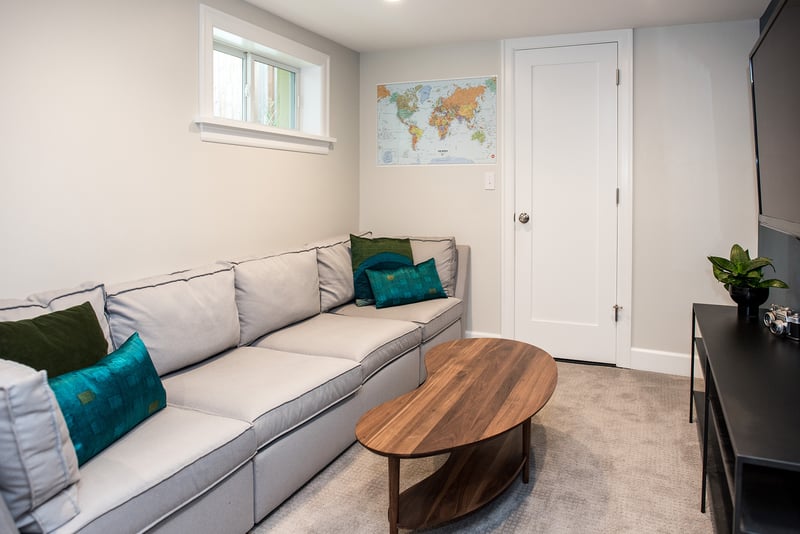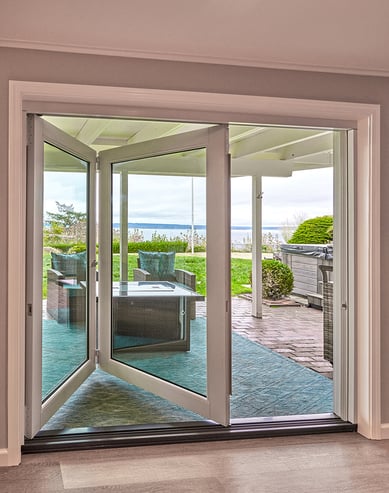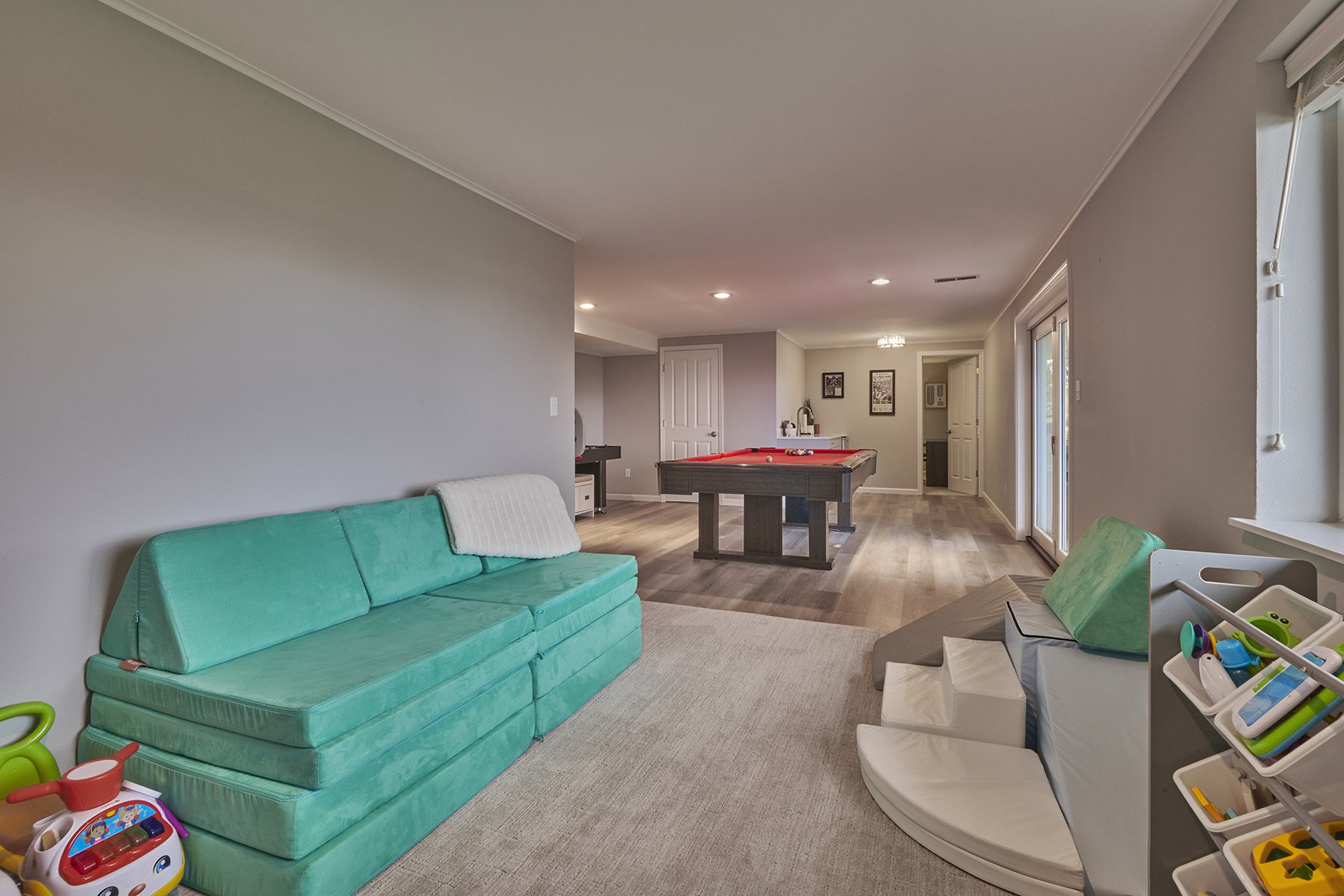When planning a basement remodel or a new build, understanding the different types of basements is crucial. In our Seattle market, there are so many basement variations. Each type has unique features and benefits that can significantly impact the functionality and value of your home. Today, we’re exploring daylight basements and walkout basements to help you determine which option best suits your needs. Let’s get started!
Our Quick Guide to Daylight Basements
What Is a Daylight Basement?
Definition and Key Characteristics
A daylight basement, sometimes also referred to as a lookout basement, is a lower-level space that includes windows above the ground level, thus allowing natural light to enter the space. Unlike traditional basements, which can feel dark and confined, daylight basements offer a brighter and more inviting atmosphere. They are a great basement style for Seattle, especially during our dark, dreary winters.
Maximizing Natural Light in Basement Spaces
The primary feature of a daylight basement is its ability to bring in natural light. By incorporating large windows and strategic placement, we work with homeowners to create a well-lit, comfortable living space that doesn't feel like a typical basement. The results are bright and airy, rather than dark and closed in.
Benefits of Daylight Basements
- Enhanced Living Space: Daylight basements provide a more pleasant and livable environment compared to standard basements.
- Increased Home Value: Homes with daylight basements often have higher resale values due to their appealing, functional spaces.
- Energy Efficiency: Utilizing natural light can reduce the need for artificial lighting, lowering energy costs.
Daylight Basement Windows
The Role of Windows in Daylight Basements
Windows are crucial in a daylight basement as they are the primary source of natural light. Their job is to transform a potentially dark and dreary space into a bright and airy living area. Without them, you’ve just got a standard basement!
Types of Windows for Daylight Basements
- Casement Windows: These windows are hinged on the side and open outward, providing excellent ventilation and unobstructed views.
- Sliding Windows: Easy to operate and perfect for tight spaces, sliding windows bring a modern look to the space.
- Egress Windows: Designed for safety, egress windows are large enough to allow for an emergency exit.
Placement and Sizing for Optimal Lighting
The placement and size of windows in a daylight basement are essential for maximizing light. We recommend that you position windows on walls facing the most natural light. Also, consider larger windows or multiple smaller ones to ensure even distribution of daylight throughout the space. Be sure to also keep in mind where the sun is located during different times of day and times of year.
What is a Walkout Basement?
Definition and Purpose of Walkout Basements
A walkout basement is a lower-level space that includes a doorway leading directly to the outside. This type of basement is typically built into a slope, allowing for direct access to the backyard or other outdoor areas. The doors are standard sized doors and can act as a totally separate entrance to the home.
Creating Access to Outdoor Areas
The defining feature of a walkout basement is its direct access to the outdoors through doors. This feature makes it an ideal choice for homeowners who want to create seamless transitions between indoor and outdoor living spaces. It’s also great if you are planning to use your basement as an Attached Dwelling Unit (ADU).
Advantages of Walkout Basements
- Outdoor Access: Walkout basements provide easy access to patios, gardens, and outdoor entertaining areas.
- Increased Natural Light: Like daylight basements, walkout basements benefit from additional natural light due to their direct exposure to the outside.
- Enhanced Home Appeal: Homes with walkout basements often have increased marketability and value, especially in regards to ADUs.
Key Differences: Daylight Basement vs. Walkout Basement
When comparing daylight basements and walkout basements, several key differences emerge that can influence your choice depending on your home’s layout and terrain. Here’s a quick overview of each.
Access and Entry Points
Access and entry points differ significantly between the two types of basements. A daylight basement typically features windows above ground level, which provide light and ventilation, but usually lack a direct entry to the outside. In contrast, a walkout basement includes a door that leads directly to the outdoors, offering convenient access to your yard or patio.
Light and Ventilation
Light and ventilation are other important factors to consider. A daylight basement relies primarily on strategically placed windows to maximize the amount of natural light that enters the space. On the other hand, a walkout basement benefits not only from windows, but also from the inclusion of a door, which further enhances both natural light and airflow throughout the space.
Terrain Considerations
Finally, terrain considerations play a crucial role in determining the suitability of each type of basement. A daylight basement is most appropriate for flat or slightly sloped lots where windows can be installed fully above ground. Conversely, a walkout basement is ideal for homes built on sloped terrain, as the natural incline allows for a direct exit to the outdoors, making it a practical and appealing choice for homeowners looking to seamlessly integrate their basement with their outdoor living spaces.
Design and Use of Walkout Basements
Outdoor Living Spaces and Patios
Walkout basements can be seamlessly integrated with outdoor living spaces such as patios and decks, creating an extended area for relaxation and entertainment. Our clients especially love having access for entertaining guests.
Multi-Level Access to Backyard
A walkout basement provides multi-level access to the backyard, making it convenient for hosting gatherings and enjoying outdoor activities.
Designing Entertainment Areas
Walkout basements also offer an excellent opportunity to design versatile entertainment areas, such as game rooms, home theaters or even a guest suite, with easy access to outdoor amenities.
Return on Investment (ROI)
As you can see, both daylight and walkout basements offer unique advantages, from increased natural light and improved living spaces to enhanced home value. Understanding their key differences can help you make an informed decision for your Seattle home.
Whether you prefer the bright, open feel of a daylight basement or the seamless indoor-outdoor balance of a walkout basement, upgrading your Seattle home with the right basement type can enhance your living experience and boost your property’s value. Ready to discuss further? Consult with CRD Design Build to explore your options and transform your basement into a functional and beautiful space!
Guide to Hiring a Remodeler
This comprehensive guide walks you through all the steps of choosing who will design and build your project, vetting remodeling companies, and ensuring that you have the best experience.
